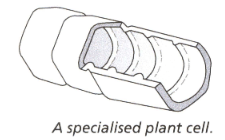Mark Levesley, Chris Meunier, Fran Eardley and, Gemma Young Solutions for Exercise 37: End of chapter review
Mark Levesley Science Solutions for Exercise - Mark Levesley, Chris Meunier, Fran Eardley and, Gemma Young Solutions for Exercise 37: End of chapter review
Attempt the free practice questions from Exercise 37: End of chapter review with hints and solutions to strengthen your understanding. Cambridge Lower Secondary Science Stage 7 : Student's Book solutions are prepared by Experienced Embibe Experts.
Questions from Mark Levesley, Chris Meunier, Fran Eardley and, Gemma Young Solutions for Exercise 37: End of chapter review with Hints & Solutions
Make the drawing of an animal cell and label nucleus, cytoplasm and cell membrane.
When using a microscope, the specimen is very thin. Explain why.
A specimen is usually put on a small piece of glass. What is this called?
Which part of the microscope do you turn to make a clear and sharp image. (condenser lens/condenser slide)
Explain one safety rule that you need to use when working with a microscope.
Yeasts are tiny organisms made of only one cell. In an experiment, yeast cells were grown in tubes containing sugar dissolved in water. They made a gas. This was bubbled through limewater, which slowly became milky.
What was the gas? Give a reason for your answer.
Yeasts are tiny organisms made of only one cell. In an experiment, yeast cells were grown in tubes containing sugar dissolved in water. They made a gas. This was bubbled through limewater, which slowly became milky.
What process produces this gas?
The drawing shows a specialised cell from a plant. Suggest the function of this cell. Explain the reasons.

